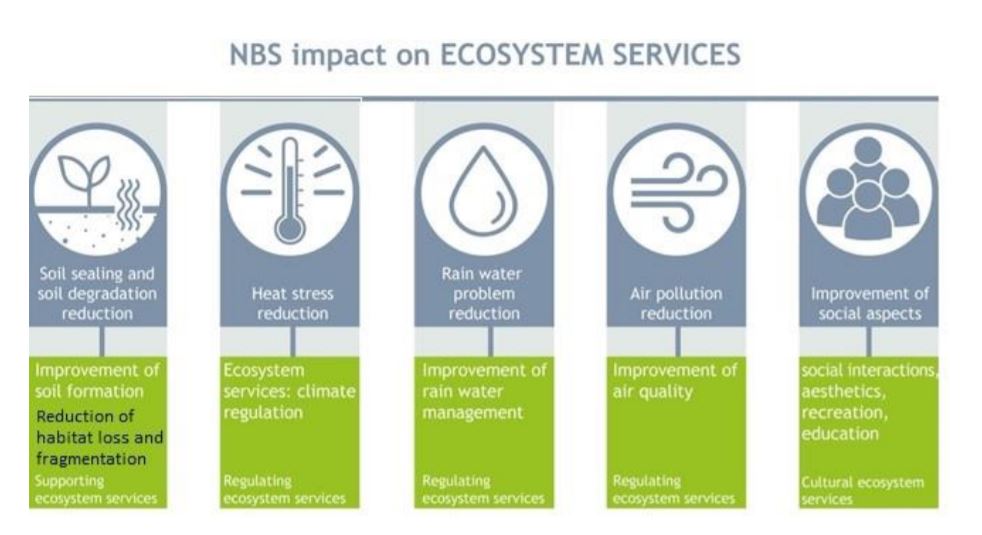Natural based solutions as a part of urban acupuncture
Today's cities face a number of challenges. One of them is climate change and the need for adaptation. Climate change is a global phenomenon. Therefore, almost all cities face the challenges associated with this change. The Salute4CE project provides examples of solutions that are based on urban environmental acupuncture. The urban environmental acupuncture is perceived as an efficient alternative to the large-scale projects due to micro-targeting and low-cost intervention, which could offer an attractive and socially accepted solution. In the time of constrained budgets and limited resources, this pinpointed approach could offer not only new attractive quality of urban space but involve a large group of city stakeholders. Some of the urban acupuncture concrete measures are so called natural (or nature) based solutions.
Definition of the NBS according to the European Union Committee is: “Solutions that are inspired and supported by nature, which are cost-effective, simultaneously provide environmental, social and economic benefits and help build resilience. Such solutions bring more, and more diverse, nature and natural features and processes into cities, landscapes and seascapes, through locally adapted, resource-efficient and systemic interventions.” A total of thirty NBS suitable for Urban Environmental Acupuncture were identified within the SALUTE4CE project.
All of them are presented in the project handbook, lets have a look at the green roof for example.
Green roofs grow living organisms like trees, shrubs, herbs, grasses, ferns, and mosses that typically grow in permanent sites. In addition, they absorb water and inorganic substances, as well as synthesize nutrients. These green roof structures can be immense, block-long buildings, small abodes and residences, or something in-between.
External upper covering of a building which the main objective is to favour the growth of vegetation. It consists of several layers ensuring water tightness and resistance to the penetration of roots as well as allowing the correct development of the vegetation. Green roofs have traditionally been categorised as ‘extensive’ or ‘intensive’: extensive green roofs are lightweight while intensive green roofs are generally heavier and support a wider variety of plant types.
Main ecosystem services provided by green roof / roof terrace are regulation of air quality (mainly by urban trees, forests, shrubs), climate regulation by reduction of CO2, water flow regulation and runoff mitigation. Possible challenges are climate change mitigation and adaptation, water management and potential.
Source: smartcitiesworld.net
For more info about NBS and urban acupuncture visit the website of the SALUTE4CE project.











.JPG)

